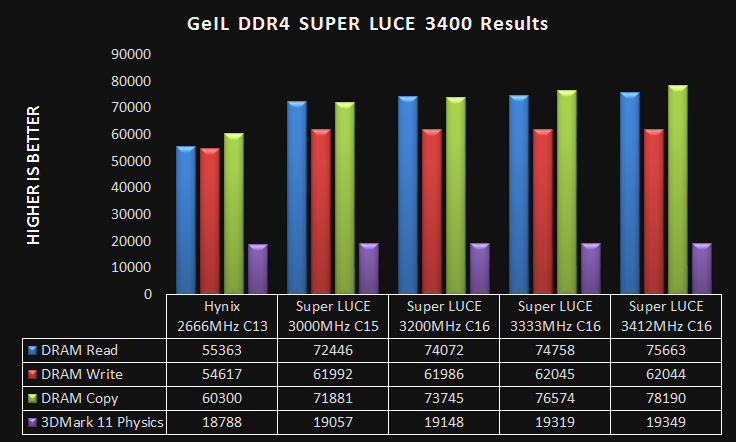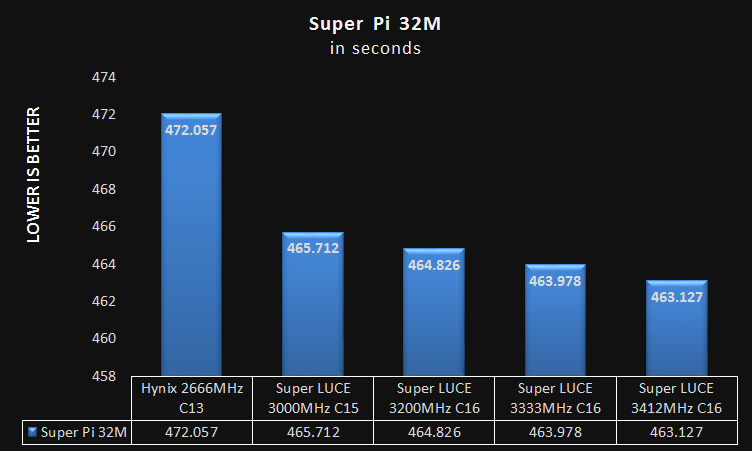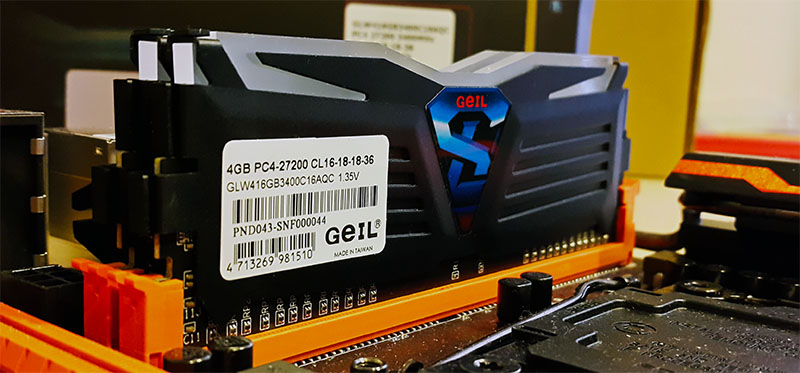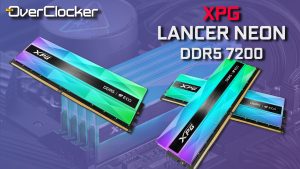GeIL Super Luce DDR4 3400MHz 16GiB
GeIL SUPER LUCE DDR4 3400
- Price/Buy: $339.99
- Homepage: http://www.geil.com.tw
In early 2015, we had a handful of high-speed DDR4 kits from just about all reputable performance memory vendors. The first half of 2015 had these kits listed on online retail stores but they were rarely available to buy. Perpetually out of stock or just announced via press releases, with no real availability. Seemingly, it was just enough to state that a certain kit exists, even though in practice it actually did not. It is in light of this that I was skeptical about GeIL unveiling their Super LUCE memory modules rated at 3400MHz. Keep in mind at the time, the only other 3,400MHz kit on the market was from CORSAIR and that kit was a cool $999 USD.
As such, what made me even more suspicious was the low $320 USD price of the Super LUCE kit. It turns out however that this kit actually is the real deal. 3,400MHz out the box, 16GiB and retailing for the same price that high performance DDR3 kits command even today. In light of this, one is able to forgive any shortcomings, as it is truly remarkable that this early during DDR4’s life span we have such high frequencies at a reasonable price.
Memory ICs used on the DRAM kits, determine performance. There is no way around that. What vendors may do is bin certain ICs for high speed and timings, but in general, when you have chips from any one of the DDR4 chip manufactures, you know what to expect. This is important to remember as you will see below why this kit not only offers incredible value, but some worthwhile performance figures as well. Certainly more than you would expect at such a low price.
SPECIFICATIONS
- Frequency: 3400MHz
- Capacity: 4 x 4GiB 288-pin DDR4 (16GiB)
- TCL: 16
- tRCD: 18
- tRP: 18
- tRAS: 36
- Voltage: 1.35V
These specifications are typical so there is nothing that tells you anything about the DRAM IC at all. At this point, you wouldn’t know if this kit is using binned Hynix or Samsung ICs. Do not fret however, as it turns out this kit makes use of SAMSUNG ICs, which known for reaching very high frequencies. They do this easier with more ease than HyniX IC’s thus far and it wouldn’t be surprising to see more vendors opt for these going forward.
Test Configuration
- INTEL Core i7 5960X @ 4,000MHz
- GIGABYTE X99 SOC-Champion (F4i)
- EVGA GTX 780Ti Classified K|NGP|N Edition
- Samsung XP 941 512GiB M.2
- CORSAIR AX1500i PSU
- Windows 8.1 64-Bit
- NVIDIA ForceWare 353.12
As usual we test all components on a regular Windows 8.1 64-bit install. It is more representative of the normal user experience than a stripped down; highly efficient installation would be for competitive overclocking.
Overclocking and Performance
Since this is a performance kit, there really is no point in testing frequencies lower than 3,000MHz. At the very least, since the sticks are rated for 3400MHz on motherboards known to be proficient at memory overclocking. It would be a wasted opportunity, sacrificing frequency just to maintain the tight timings. As it stands this motherboard and DRAM combination doesn’t quite offer the same low timings that we could achieve on the only other 3400MHz kit we’ve tested. However, keep in mind that we are talking about a $320 kit here. The timings could stand to be worse and it would still be worthwhile as there just aren’t many alternatives at present. Starting at 3,000, we jumped up to 3,200MHz, 3,333MHz and then finally 3,412MHz. The reason for the odd frequency at the end is simply that one has to keep the CPU clock consistent to see where the optimum performance is for the kit. There is no possible way in which one may evaluate memory with the CPU clock constantly changing. Moreover, it speaks to what the memory can achieve when overclocked which is exactly what we are interested in.
Frequencies past 3,412MHz are possible with this kit obviously, but unfortunately, the CPU that used just doesn’t have an IMC that is capable of reaching these frequencies with this particular set. Here in lies the challenge as well for high-speed memory on the X99 platform. The CPUs vary a lot when it comes to overclocking headroom and where one CPU may happily reach 3,800MHz and higher, another one such as this one will be limited to 3,500MHz. There’s no way to know this until you actually try said high-speed memory kit. Some vendors will issue your money back should this be the case, but one is unsure if GeIL is willing to do the same. At worst, you may claim incompatibility, but it is something to be mindful of when purchasing any memory rated higher than 3,200MHz. This may very well not be an issue for the Z170 platform, but this memory will be re-evaluated at that time when such CPUs and motherboards are available in retail outlets.
With that said, any frequency lower than 3,500MHz should not be an issue with any X99 CPU. So you can rest assured that regardless of how poor your particular CPUs IMC is. It will match this performance scaling and deliver this kind of performance. Of all the frequencies tested, you’ll notice that 3412MHz CL16 offers the best performance courtesy of the right combination between frequency and timings. Normally one would expect 3200MHz to be the best but this set will not do CL15 at such a frequency and as such, that extra 200MHz more than offsets the loss in timings. This is not so much of a problem or issue actually. Making use of 3412 is hardly going to require additional voltage and in fact, this frequency is possible at the regular 1.35V. As far as performance goes, there’s simply no beating the highest clock speed possible while maintaining a steady CPU clock. As is often the case, it is worth mentioning that these results are due in part to the 4GHz Uncore. This is not possible on every motherboard especially the earlier ones, thus you should be careful comparing these results with what you may have from your set. With all things equal, you should have performance that is near identical to what we have here. Even more performance may be extracted from this set via tuning the secondary and tertiary timings, on the motherboard. This is a timely exercise and needs patience and care, however all the results displayed above can be exceeded by some great margins without dealing with the primary timings at all. Thus, you should look at these results as the minimum levels of performance to be had with the GeIL set. How far you can push this memory is entirely up to your chosen CPU and ability to tweak the memory on your motherboard
Aesthetics and general Appeal
The LEDs work well on this set of memory. The breathing effect may not be to everyone’s liking but it looks all right on both motherboards tested on. Aesthetics will always be subjective but one must admit that the heatsinks are rather flimsy, especially the LED bars which give easily to even the slightest bit of pressure. As you’ll likely hold the sticks here when inserting them, one can’t help but feel that you may cause the sticks damage when you handle them. The heat spreaders are stuck on with a thermal glue and they are not easily removable. I personally still prefer the firmer build quality of the EVO Potenza memory heat sinks but again, this is a minor issue given just how much you performance you get for this price.
Conclusion
In closing, this is a damn fine set of memory. Yes, it does not have the aesthetic appeal of the DOMINATOR PlATNINUM kit nor the build quality. It doesn’t even tighten to the same degree, as the chips aren’t binned for that. You have to think about it though, pay $1,000 for the same capacity and frequency or opt for a $320 USD set which even if you bought two would still leave you with money for a high performance SSD, games, a CPU pot or what have you. You simply can’t beat this set for value and as such it is rightfully deserving of our OC-HERO and VALUE awards. Get it while you still can!













